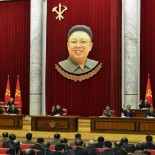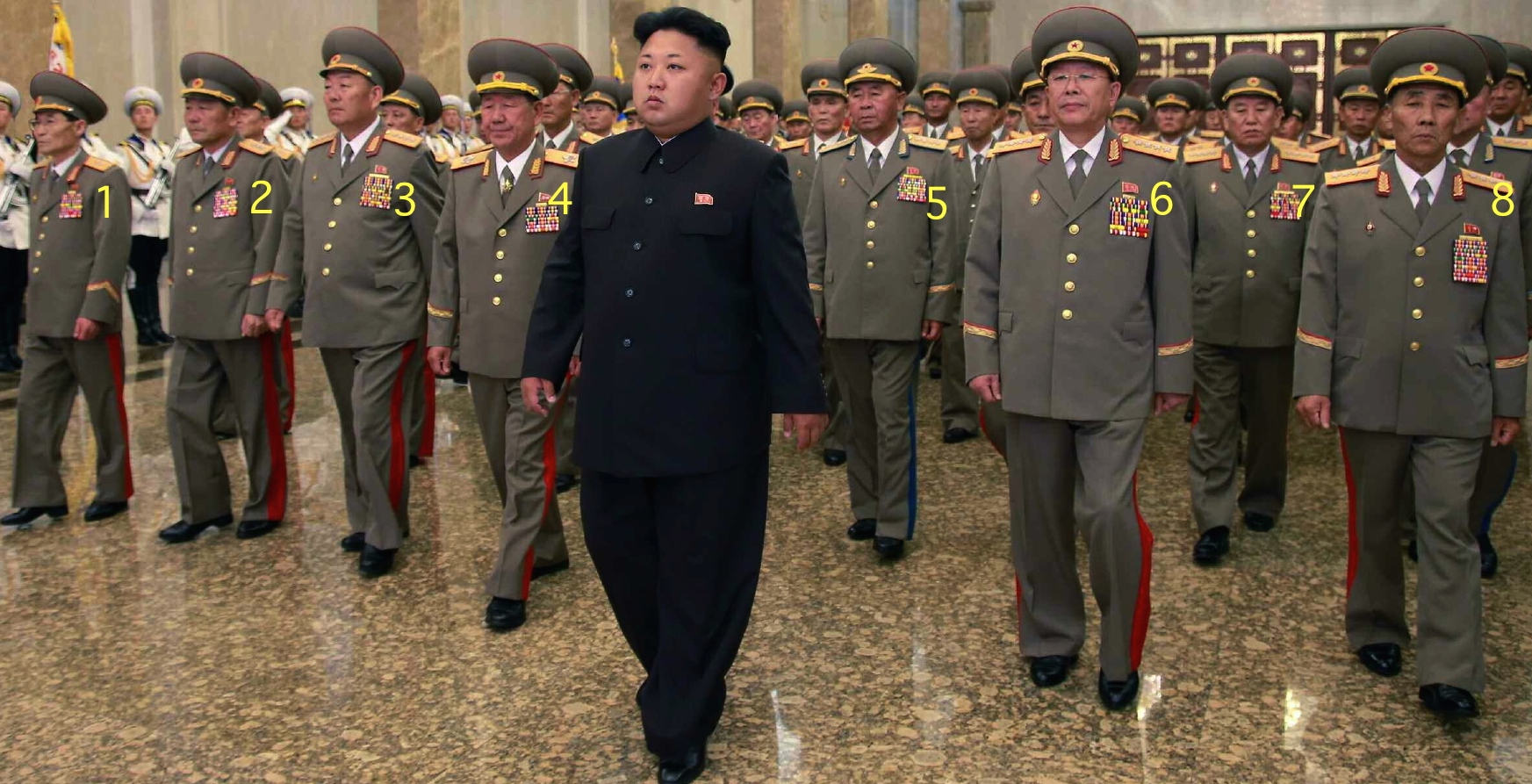Kim Jong Un Visits Ku’msusan on KJI Birthday

Kim Jong Un (right) and his wife Ri Sol Ju visits Ku’msuan Palace of the Sun in Pyongyang on February 16, 2016, accompanied by KPA adjutants (Photo: Rodong Sinmun).
Kim Jong Un’s last observed appearance was his attendance at a banquet and concert at Mokran (peony) House in central Pyongyang for personnel involved in the launch of the Kwangmyo’ngso’ng-4
Kim Jong Un (Kim Cho’ng-u’n) visited the Ku’msusan Memorial Palace of the Sun in Pyongyang at on February 16 (Tuesday), the birth anniversary of his father late DPRK leader Kim Jong Il (Kim Cho’ng-il). He was accompanied by his wife Ri Sol Ju (Ri So’l-chu).
Jong Un visited a chamber in which KJI’s preserved remains lie in state. Jong Un and Ri Sol Ju bowed “in the humblest reverence.” He “recollected with deep emotion the noble revolutionary career and immortal exploits of Kim Jong Il who devoted his all to the sacred cause for the prosperity of the country and the happiness of the people.” Jong Un also “made a firm pledge to certainly win the final victory of the revolutionary cause of Chuch’e by conducting all state affairs as intended by Kim Jong Il and the way as he did, true to his behsts on making the world look up to the great Party and Kim Il Sung’s (Kim Il-so’ng’s) Korea.”
Kim Jong Un’s visits Ku’msusan are a good opportunity to see what leadership institutions the Suryo’ng wishes to emphasize in state media (the WPK Political Bureau vs. senior KPA commanders) and which senior officials have retained their positions and which have fallen by the wayside. This year, for the Day of the Shining Start, Kim Jong Un appears to be emphasizing his sole, monolithic leadership by only being accompanied to Ku’msusan by his wife. He also eschewed the usual ceremony and honor guard and paid his respects to his father with his wife.
An image from his July 2014 visit to Ku’msusan, to commemorate the 20th anniversary of the death of his grandfather, highlights some of the personnel changes that have occurred in the KPA high command.
The distinct trend is that all but one of these personnel changes involve senior officials from the KPA General Staff apparatus, which contains the North’s conventional armed forces, while the KPA General Political Department, which contains the KPA’s political personnel involved in indoctrination, political education and surveillance, was unaffected.
- Lt. General Ryom Chol Song: Lt. Gen. Ryom is a deputy director of the General Political Department and heads of the KPA General Propaganda Department which involves him in political education, ideological indoctrination, cultural and athletic activities. Lt. Gen. Ryom has held onto his job since being appointed in 2012.
- Gen. Pak Yong Sik: At the time this photo was taken Pak held the rank of Colonel General and was Vice Minister of the People’s Armed Forces. He was later promoted to General and in May 2015 was appointed Minister of the People’s Armed Forces, the DPRK’s equivalent of a defense minister.
- Gen. Hyon Yong Chol: In July 2014, Gen. Hyon was the Minister of the People’s Armed Forces. He was dismissed from this position in May 2015 and was rumored to have been executed by anti-aircraft artillery pieces. This has never been corroborated and, interestingly, Gen. Hyon’s image still appears in DPRK state media which almost always excises photographs and films of executed officials. A man who resembles Gen. Hyon has also appeared sitting in the gallery at state meetings; if this man is Hyon it means that his political status is severely diminished and he currently has a low-ranking position within the regime.
- VMar Hwang Pyong So: Hwang is the Director of the KPA General Political Department. He is a close aide to Kim Jong Un and is a civilian political manager that has been directly involved in every personnel decision involving the KPA during the last five years.
- Gen. Ri Pyong Chol: In July 2014, Ri was the commander of the KPA Air Force, a position he held since 2007. In December 2014, Ri Pyong Chol left his position as head of the air force and became one of the senior deputy directors of the WPK Organization Guidance Department [OGD]. Ri’s portfolio at OGD includes military affairs and WMDs.
- Gen. Ri Yong Gil: At the time that this photo was taken Gen. Ri was Chief of the KPA General Staff. He was removed from office in January 2016.
- Gen. Kim Yong Chol: From 2009 to 2016, Kim Yong Chol was Director of the KPA Reconnaissance General Bureau [RGB], the DPRK’s leading intelligence agency, and held the concurrent position of Vice Chief of the KPA General Staff. In January 2016, Kim Yong Chol (like Ri Pyong Chol mentioned above) migrated from the military to the party apparatus. Kim Yong Chol is currently the WPK Secretary and Director of the United Front Department, a civilian intelligence agency and policymaking shop involved in the DPRK’s relations with the ROK. Within a month of being appointed, Kim visited Laos. It remains unclear if, with his new job, Kim Yong Chol also brought some of the intelligence departments that were under his purview at the RGB.
- Gen. Pyon In Son: In July 2014, Pyon In Son was serving as Director of the KPA General Staff Operations Bureau and held the concurrent position of 1st Vice Chief of the KPA General Staff. Pyon was removed from office in October 2014. He is also rumored to have been executed.

